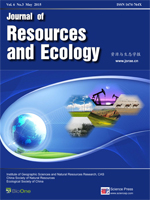CO2 emissions to the atmosphere were studied in a fertilized sandy agricultural soil with and without a catch crop sown into the main crop. The catch crop was grown primarily with the purpose to decrease N-leaching but this study also wanted to find out if the catch crop could have an effect in a climate change perspective. Plots with catch crop showed decreased CO2 emissions from the soil. Since previous results have shown that catch crops effectively decrease N-leaching we recommend growing catch crops as an effective measure for helping both the climate and the eutrophication issue. Seasonal variations in CO2 emissions were pronounced with maximum emissions from the fertilized agricultural soil in June and from an adjacent unmanaged grassland in August. From the plot with catch crop emissions decreased in July and August but somewhat increased later in the autumn. Fertilized agricultural soil showed a within-soil CO2 sink after harvest, i.e. within-soil CO2 uptake. Availability of NH4 or NO3- in the soil seems to influence the within-soil CO2 sink, with NH4 enforcing the sink while the same amount of NO3- instead increased CO2 emissions.
How to translate text using browser tools
1 May 2015
Catch Crop Known to Decrease N-Leaching also Counteracts Soil CO2 Emissions
Marie Mattsson,
Marie Magnheden ,
Siegfried Fleischer
ACCESS THE FULL ARTICLE

Journal of Resources and Ecology
Vol. 6 • No. 3
May 2015
Vol. 6 • No. 3
May 2015
Catch crop
CO2 sink
grassland
N-leaching
seasonal change




